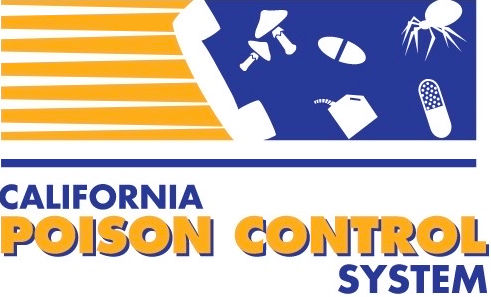By Alicia Minns, MD
Introduction
Cardioactive steroids or cardiac glycosides are naturally‐occurring compounds identified in various plant and animal species. Self-poisoning with plants is a major problem in certain parts of the world such as rural Asia, killing thousands of people each year. One of the most common poisons used for self-harm in much of South Asia are the seeds of the yellow oleander tree (Thevetia peruviana), and the rate of morbidity and mortality is high. There are multiple naturally occurring cardiac glycosides including Lily of the Valley (Convallaria majalis), Squill (Drimia maritima), Foxglove (Digitalis sp), Common Oleander (Nerium oleander), and the Cane Toad (Rhinella marina). There is structural diversity among these compounds and they are subclassified on the basis of the steroid moiety, whereby those with a five‐membered lactone ring are called cardenolides while those with a six‐membered lactone ring are called bufadenolides. Ingestion of naturally occurring cardiac glycosides produces a clinically picture very similar to that of digitalis poisoning. General symptoms and signs include nausea, vomiting, and abdominal pain. The main life-threatening clinical manifestation is cardiac toxicity.
Case presentation
A 46-year-old female presented to the Emergency Department with vomiting, perioral numbness, and generalized weakness. She had no medical problems and was taking no medications. She reported ingesting cooked toad eggs about 1 hour prior to her presentation. Her blood pressure was 89/54 mmgHg and a heart rate of 52 beats per minute. A basic metabolic panel demonstrated: sodium 134 mmol/L, potassium 6.8 mmol/L, bicarbonate 18mmol/L. A serum digoxin concentration measured 1.9 nmol/L. The remainder of her blood work was unremarkable. The patient got progressively more disoriented and lethargic. An ECG demonstrated complete atrioventricular block. Five vials of digoxin-specific Fab fragment were administered at the recommendation of the regional poison control center. She was admitted to the ICU for monitoring and recovered after a short admission.
Questions
- How do cardiac glycosides cause cardiac dysrhythmias?
- How is poisoning with a natural occurring cardiac glycoside diagnosed?
- How is an acute poisoning treated?
Epidemiology
Human exposure to naturally occurring cardiac glycosides may result from accidental ingestion, intentional ingestion, ingestion of medicinal preparations, and criminal poisoning. Oleander poisonings are widely reported from the United States, Europe, Southern Africa, India, East Asia, Sri Lanka, and the Solomon Islands. Deliberate self-harm through ingestion of T. peruviana has become very popular, and there are several thousand cases occurring each year, with a case fatality rate between 4 and 10%. Further, significant dysrhythmias may be delayed for up to 72 hours post-ingestion, requiring prolonged hospital admissions. Unfortunately, because digoxin-specific antibody fragments (DigiFab) is expensive, it is not readily available worldwide, particularly in developing countries where poisonings with these plants are common. Therefore, the management of patients with severe cardiac glycoside poisoning is generally difficult and costly in countries with limited resources.
In spite of their toxicity, N. oleander and T. peruviana have historically been used as abortifacients, as well as therapeutics for heart failure, leprosy, malaria, ringworm and indigestion.
Pathophysiology and pharmacokinetics
Individual cardiac glycosides vary widely in their pharmacokinetic properties, despite similarities in structure. Yellow oleander seeds contain a variety of cardiac glycosides including thevetoxin, thevetin A and B and neriifolin. All parts of the plant containing cardiac glycosides are toxic, with the roots and seeds typically containing the highest percentage of toxins. Ingestion of 5-15 N. oleander leaves has resulted in a fatal poisoning. It has been suggested that one leaf of N. oleander could be toxic to children, however several more nonfatal cases have been reported with varying amounts of leaves, extract, flowers, and root extract. Ingestion of 8-10 T. peruviana seeds can be fatal to adults, however the amount of seeds ingested has not been shown to correlate with the degree of toxicity. This poor correlation could be due to several factors including variability in cardiac glycoside concentrations among seeds, limited absorption from the gut, vomiting in some patients after ingestion, and individual factors.
Cardiac glycosides bind to and inactive the Na+/K+ ATPase that extrudes sodium and imports potassium into cardiomyocytes. Inhibition causes build-up of intracellular sodium, which increases intracellular calcium, which in turn induces further calcium release from the sarcoplasmic reticulum. This leads to increased force of contraction (positive inotropic effect). The increase of intracellular calcium ions also raises the resting membrane potential of the cell, leading to increasing rates of spontaneous cellular depolarization and automaticity. The myocardium becomes irritable and arrhythmogenic. In addition, increased vagal tone causes bradycardia. Inhibition of the Na+/K+ ATPase also leads to hyperkalemia. In acute poisoning, the degree of hyperkalemia correlates to the severity of toxicity.
Clinical presentation
The predominant features of acute poisoning include gastrointestinal symptoms (nausea, vomiting, abdominal pain, diarrhea), generalized weakness, drowsiness and cardiotoxicity. Symptoms may appear within a few hours of acute poisoning. Gastrointestinal symptoms are common and the absence of nausea and vomiting makes severe poisoning unlikely. The most common cardiac abnormality in poisoning is sinus bradycardia. In mild poisoning, subtle ECG changes may be seen such as flattening or inversion of the T wave and depression of the ST segment. Moderate poisoning manifests as prolonged PR interval (first degree heart block) or sinus bradycardia. Severe poisoning manifests as second or third degree heart block due to inhibition of the atrioventricular node. Deaths occur due to ventricular fibrillation resistant to electrical cardioversion or asystolic arrest. In a series of intentional yellow oleander poisoning, 56% of 162 patients with intentional self‐poisoning developed dysrhythmias requiring treatment. The time course for progression and resolution of cardiotoxicity was variable. Most deaths however occurred within 24 hours.
Diagnosis
Hyperkalemia is a manifestation of cardiac glycoside poisoning, and although a higher potassium concentration is associated with increased risk of toxicity, the relationship between potassium concentration and cardiotoxicity is poorly defined. Most digoxin assays are based on ELISA platforms which can cross react with similar structures, so this can be utilized for determining if non‐digoxin naturally occurring cardiac glycosides are present. However, the reported ‘digoxin concentration’ may not correlate with toxicity because it reflects an unknown proportion of several cardiac glycosides with differing potency and cross‐reactivity. Communication with the laboratory may provide valuable insights into the extent of cross‐reactivity with the assay they use, including information regarding whether it has been tested against positive controls from non‐digoxin sources.
Treatment
The management of patients with suspected or known cardiac glycoside poisoning is complicated by the variable time course in toxicity and unpredictable dose–response relationship. Management is also complicated by the fact that there is variability in the onset of toxicity as discussed above. For example, death has occurred after ingestion of one or two yellow oleander seeds, while other patients have survived after consuming 10 or more seeds without requiring pacing or anti‐digoxin antitoxin.
Given the structural similarity of the cardiac glycosides, treatments are frequently extrapolated from digitalis poisoning. However, in recent years, there have been an increasing number of clinical trials assessing yellow oleander poisoning. Currently, randomized controlled trials are only available for yellow oleander poisoning, so data supporting recommendations for poisoning with other cardiac glycosides including digoxin is of low quality.
In general, patients with acute poisoning should be admitted to an area for continuous cardiac monitoring. Because of the risk of a delayed onset of significant dysrhythmias as seen in yellow oleander poisoning, it may be necessary to monitor such patients for up to 72 h post‐ingestion. If a patient is asymptomatic, with a normal ECG and potassium level, then the risk of developing poisoning is low and the patient can be medically cleared after a period of observation.
A single dose of activated charcoal 50–100 g should be administered to all patients with acute ingestion of a potentially toxic exposure, if no contraindications exist, such as vomiting or altered mental status. Some advocate for administration of activated charcoal regardless of the time of ingestion. Although there is limited data to support this approach, many naturally occurring cardiac glycosides have a prolonged absorption phase. Administration of multi-dose activated charcoal (MDAC) has been demonstrated to increase the clearance and decrease the elimination half-life of digoxin. There is conflicting literature regarding whether this translates to a meaningful clinical outcome. It appears reasonable to administer MDAC if no contraindications exist (mainly any risk of aspiration), but should not be substituted for other therapies described below.
Deaths have been reported in hypokalemic patients with yellow oleander poisoning. Hypokalemia may be observed in patients with cardiac glycoside poisoning, due to either excessive diarrhea or medications such as diuretics. Hypokalemia should be corrected since it increases cardiotoxicity.
In an acute poisoning, hyperkalemia is more commonly observed. Given the mechanism of action of cardiac glycosides, the extent of elevation is broadly considered to reflect the severity of poisoning. Hyperkalemia should be treated per standard treatment with insulin/dextrose and sodium bicarbonate.
Exogenous calcium to ‘stabilize’ the myocardium in hyperkalemia is commonly recommended in other settings. Theoretically, given that the intracellular concentration of calcium is elevated in cardiac glycoside poisoning, administration of calcium may increase toxicity. Animal data have reported increased toxicity including death, which may relate to sustained cardiac contraction also known as ‘stone heart’. However, human case reports have not noted complications from intravenous calcium. Additionally, in an animal study in pigs with digoxin poisoning, intravenous calcium chloride did not change mortality.
Atropine antagonizes cardiac glycoside induced vagal activation, increasing heart rate. Doses of 0.5–1 mg are used first line, but doses as high as 2–3 mg have been used for persistent bradycardia. Digoxin-specific antibody fragments (DigiFab) have been demonstrated to be helpful in yellow oleander poisoning. Dosing is generally higher in naturally occurring cardiac poisoning as compared to digoxin because of the lower affinity binding of DigiFab to these toxins. Initial therapy consists of 10-20 vials of DigiFab, with subsequent doses based on clinical response.
Temporary cardiac pacing does not reverse the hyperkalemia associated with this toxicity and may be associated with more complications. Insertion of the pacing wire may also trigger ventricular fibrillation. Additionally, electrical cardioversion is generally ineffective for patients with malignant ventricular dysrhythmias from any cardiac glycoside and should be reserved for cases with ventricular dysrhythmias refractory to other treatments using low energy levels.
Data do not support the role of extracorporeal treatments such as dialysis in cardiac glycoside poisoning. A range of other treatments have been tested in animal models, but data supporting an effect are limited and their use in routine clinical practice is uncommon. These include anticalin, fructose‐1, 6‐diphosphate, β‐adrenoceptor agonists (isoprenaline or salbutamol) and magnesium.
Discussion of case questions
- Cardiac glycosides bind to and inactive the Na+/K+ ATPase leading to increased force of contraction/positive inotropy (from increased intracellular calcium). The increase of intracellular calcium ions also raises the resting membrane potential of the cell, leading to increasing rates of spontaneous cellular depolarization and automaticity. The myocardium becomes irritable and arrhythmogenic. Increased vagal tone causes bradycardia.
- Diagnosis is based on history and physical examination. Hyperkalemia due to inhibition of the Na+/K+ ATPase is typically seen in severe poisoning, although not always present. A positive digoxin level due to cross-reactivity on the ELISA assay is strongly suggestive of poisoning in the appropriate clinical setting.
- Treatment consists of GI decontamination with activated charcoal, correction of electrolyte abnormalities and digoxin-specific antibody fragments to bind the toxin.



